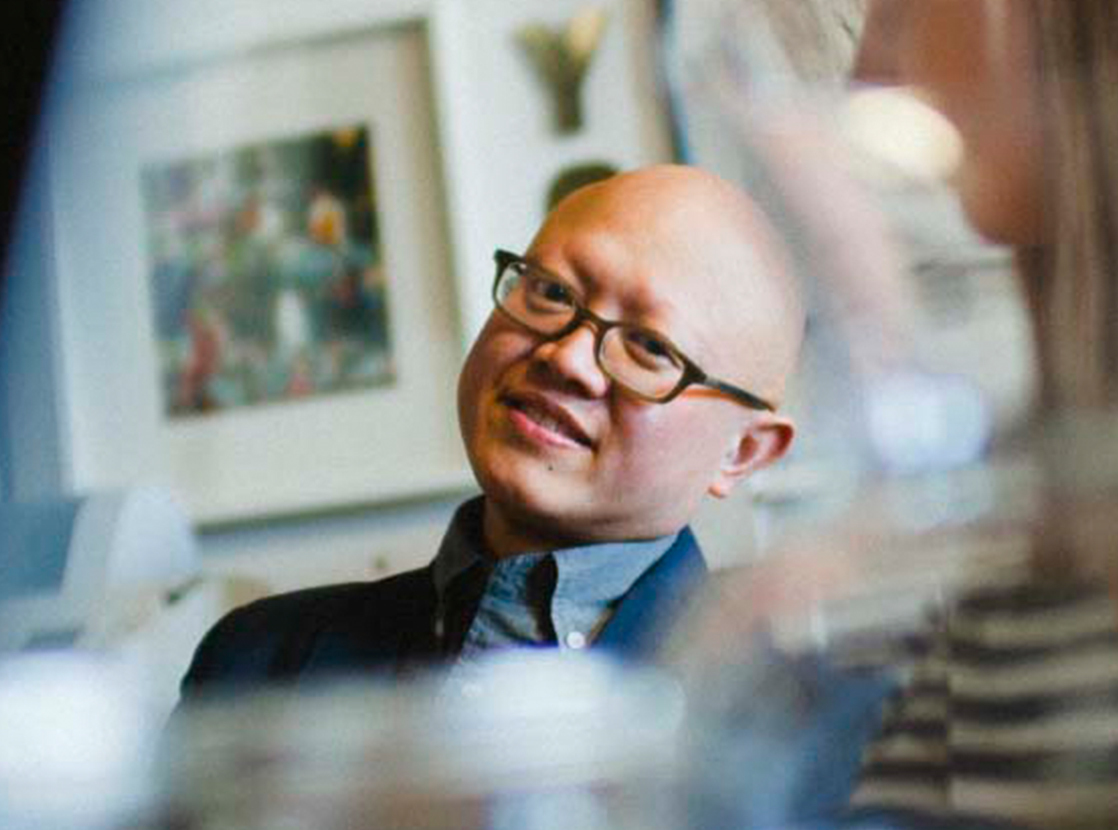Allan Espiritu is a Philadelphia based graphic designer and educator. He is the founder of GDLOFT PHL, a small collaborative design studio made up of photographers, fine artists, students, designers and (aspiring) competitive food eaters, focusing on design for educational, arts and cultural and non-profit institutions. GDLOFT’s work has been published and acknowledged by AIGA, GDUSA, UCDA, Graphis, Communication Arts, Print Magazine, HOW, STEP and Art Directors Club. GDLOFT’s work has also appeared in Gestalten and Rockport publications.

Allan heads the graphic design concentration at Rutgers University, Camden Campus and had recently served as President of the AIGA Philadelphia chapter.
Ahead of Allan’s arrival in Cleveland this weekend, we asked him a few questions about GDLOFT PHL, the company he founded, the organizations he enjoys working with, and conceptual design.

For the early part of my career, I worked for a variety of agencies and studios.
In many cases, I was creating work for clients, projects, and products that I had little connection with. Graduate school at Yale School of Art gave me the confidence and perspective to pursue work that resonated with me. GDLOFT was started as an experimental lab for me and my students. I wanted to be able to choose projects and create a space that would serve as a testing ground to exercise some theoretical rigor. I wanted to explore my interests, trying to fluidly move between graphic design and fine art. We received some recognition for the work we were making and attracted more clients—quickly GDLOFT became a “studio.” We continue to strive to make work that could have social impact and relevance. It’s tough! But it’s worth the constant fight to create work that is relevant while walking the line of design and fine art. This is the foundational belief of the studio.

These organizations are backed by socially conscience missions that I feel are worthy of my efforts. I want to make work that has social impact as opposed economic ones. The projects for these types of organizations often allow for experimentation and unconventional approaches to making work. In addition, these organizations often educate me about issues and subjects that are of relevance to society at large that I may overlook or are outside my own spheres.

For me, the idea is paramount. The concept decides everything—over powering any subjective inclination. The idea informs and guides every visual choice—from layout to format to paper choice. Every choice is related to the concept, trying to keep subjectivity out of the process.
The visual articulation, for me, becomes just a result of this approach. This perspective yields unexpected results and makes the process of designing fresh and unexpected for both me and my clients.
The subjectivity in the process comes from a theoretical perspective. I’m very influenced by the Situationist Art movement of the late 50’s and 60’s. Many of the ideas and methodologies developed by these artists naturally seep into my own process and concepts when making work.
For me, the combination of these two approaches creates a perspective that is highly personal in subtle and exploratory ways.
Stay tuned this week for more Q+A’s with judges Ellen Beldner and Gail Anderson.